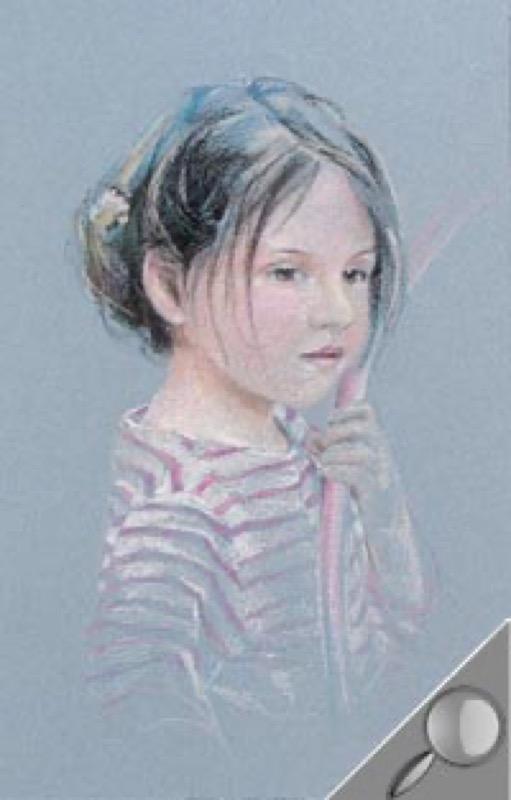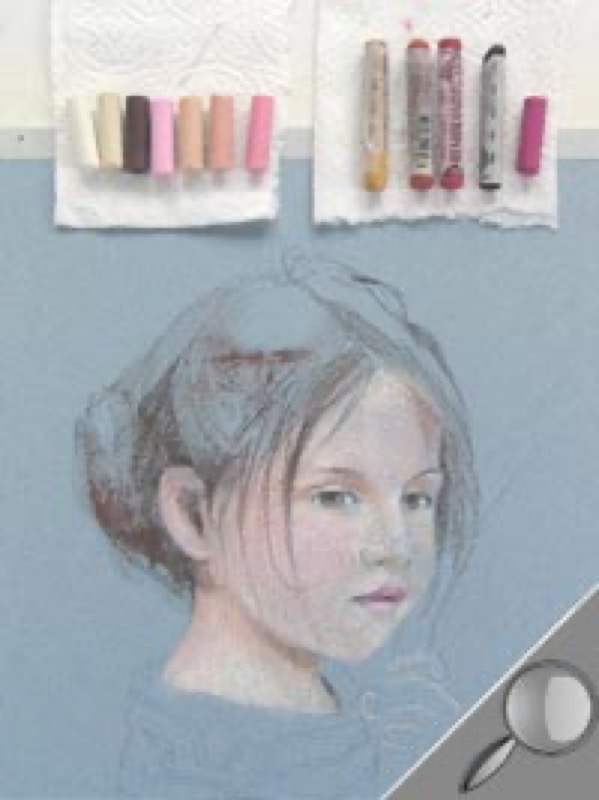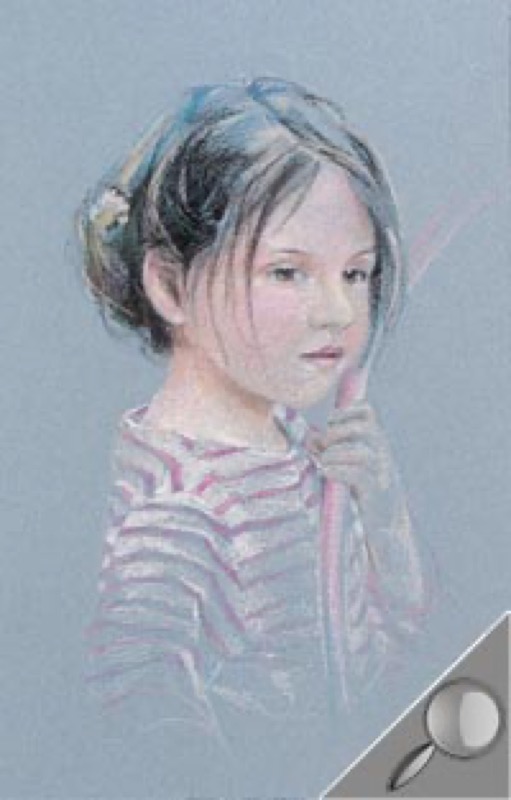
Level: experienced / Time of execution: 3 hours
Artist : Patrice Baffou
This exercise is useful for anyone wanting to progress in dry passtels. This portrait was done using the "partial" technique (where colors are applied more and more lightly), an excellent way to learn how to master the interplay of shadow, light and typical pastel colors.
Material
- Paper: Canson® light blue Mi-Teintes®, 160 g/m2, 50 x 32.5 cm format
- 13 Half-soft Rembrandt Pastels: burnt sienna (411.9), burnt umber (409.5), white, black, yellow ocher (227.9), dark yellow (202.9), Venetian red (339.7), Prussian blue (508.7), blue green (640.7), crimson (318.8), permanent rose (397.7), red violet (545.5)
- Accessories: 1 roll of paper towels, 1 sheet of tracing paper.








